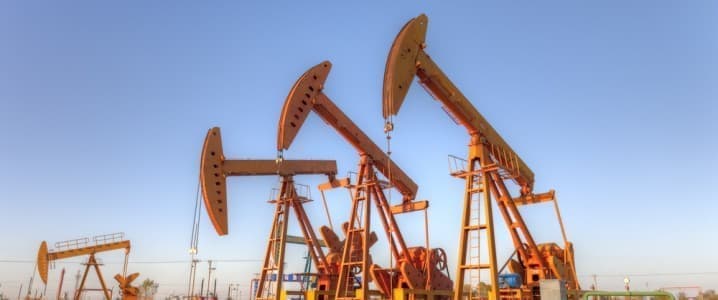Peru’s Oil Industry Is Bouncing Back Despite Election Chaos

Even after surviving an extremely difficult 2020, marred by a constitutional crisis, violent protests, and the COVID-19 pandemic, there are signs of worse ahead for Peru’s beaten-down oil industry. The Andean country was engulfed by political turmoil in the lead-up to the 2021 presidential elections with two controversial candidates reaching the second-round run-off. After a close-run vote, leftist Pedro Castillo appears to have emerged victorious over business-friendly Keiko Fujimori, daughter of disgraced former president Alberto Fujimori who is serving a jail term for corruption. According to the latest ballot count Castillo has emerged victorious with 50.1% of the vote with Fujimori trailing at 49.9%. Nonetheless, Fujimori refuses to concede demanding electoral authorities review ballots which she claims are irregular. That is fueling further turmoil in what has been a deeply polarizing and extremely close election marred by violent incidents including the massacre of 14 people in a remote coca-growing region of Peru, which was thought to have been committed by a dissident faction of the socialist Shining Path guerillas. If Castillo eventually secures victory, he will take office on 28 July 2021. The growing likelihood of the socialist candidate winning has sent a shudder through Peru’s political establishment, the business community as well as mining and oil industries. In the run-up to the election, Castillo campaigned on a platform of resource nationalism, including greater state control of natural resources, sparking fears that the nationalization of oil and mining assets could be on the agenda if victorious. While his party recently ruled out the nationalization of natural resources, including mining and petroleum assets, greater state interference could be disastrous. One need only look at the history of neighboring Ecuador’s oil industry under leftist president Rafael Correa, who from 2007 to 2017 embarked on heavy-handed state intervention in the economically crucial resource sector. Correa’s policies, which included gaining greater state control of oilfields and petroleum reserves as well as hiking taxes and royalties, not only deterred foreign investment in Ecuador’s hydrocarbon sector but precipitated significant corruption. That saw exploration and development activities decline causing oil reserves as well as production to stagnate.
Recent events in Peru, including the massacre of 14 people in a remote part of the Andean country, which was the worst in decades, highlight the clearly visible fractures in a society that has been sharply impacted by the pandemic. It is extreme poverty and lack of access to resources in many rural regions, particularly in Peru’s Amazon, triggered violent protests during 2020 against the oil industry which disrupted operations and production. While the national government in Lima committed to a $1.7 billion regional aid package to address the community concerns driving the protests, it is yet to be delivered, creating the potential for further civil dissent and violence. The plethora of issues impacting Peru’s oil industry, including a lack of investment, aging infrastructure, and a lack of social license in many communities where it operates are impacting production.
There are signs, however, despite the political turmoil Peru’s petroleum industry is recovering. Data from the national oil company and regulator Perupetro shows (Spanish) May 2021 crude oil output averaged 41,128 barrels per day which was a healthy 13% greater than a month earlier and an impressive 30% higher year over year. Natural gas liquids production expanded by a notable 15% month over month to 78,787 barrels of oil equivalent, although that was marginally lower compared to the same period in 2020. Unlike hydrocarbon liquids, Peru’s May natural gas production declined sharply falling 10% compared to a month earlier and nearly 8% year over year to an average of 134,682 barrel per day. As a result of that solid performance, Peru’s total hydrocarbon output for May 2021 of 342,714 barrels of oil equivalent daily was 2% greater than April and an extremely healthy 33.7% higher than for the equivalent month in 2020.
Source: Perupetro and U.S. EIA.
Those numbers demonstrate that Peru’s petroleum industry is finally rebounding after an extremely tough 2020 when the National Society of Mining Petroleum and Energy (SNMPE – Spanish initials) issued a statement in November (Spanish) claiming it was in crisis. Some analysts are predicting that the oil industry’s contribution to Peru’s gross domestic product will grow by up to 9% between 2021 and 2022. That will act as a powerful driver of Andean country’s post-pandemic economic recovery. The IMF estimates that Peru’s GDP will expand by 8.5% this year following an 11% contraction during 2020.
There is every likelihood that Peru’s hydrocarbon production will continue to grow. Perupetro is focused on reactivating operations in blocks 8, 64, and 192 located in its Amazon basin. The companies which were operating those blocks, Pluspetrol, Geopark, and Frontera Energy, withdrew after community blockades and protests saw them call force majeure. Peru’s regulator, in January 2021, flagged that it was considering launching a 2021 bid round for 10 blocks, which if it takes place will be the first such event in over a decade. If those measures are successful, they will add additional momentum to Peru’s growing hydrocarbon production.
The primary threat to Peru’s petroleum industry is Castillo’s plans to expand how much the state receives from energy companies operating in Peru. In April this year, he stated that he was seeking to take up to 70% of energy and mining companies’ profits which would impact foreign investment making Peru a less attractive destination. There is also the ever-present fear of nationalization, but that appears highly unlikely given that he will need to build consensus within a divided congress which will prevent him from implementing radical policies. Nevertheless, some analysts believe that as Castillo progresses in his term as president that the policies implemented by his government could become steadily more radical.





